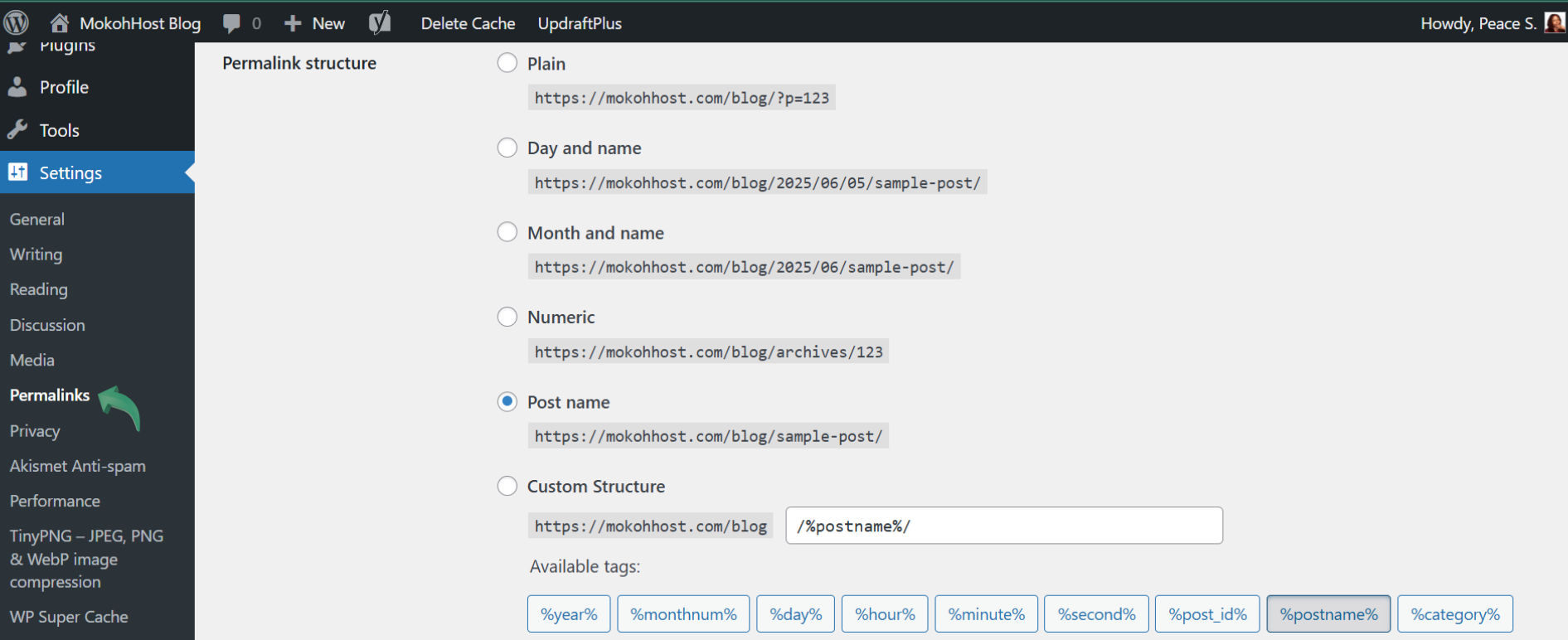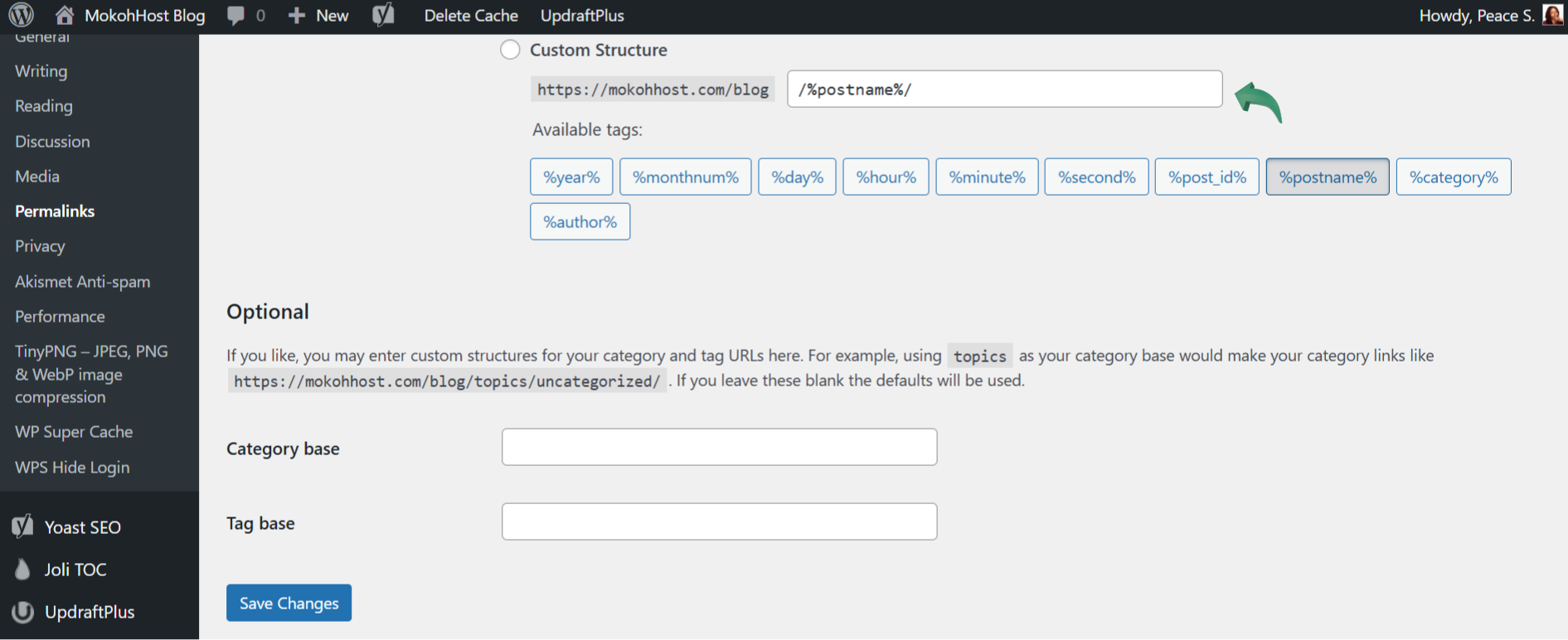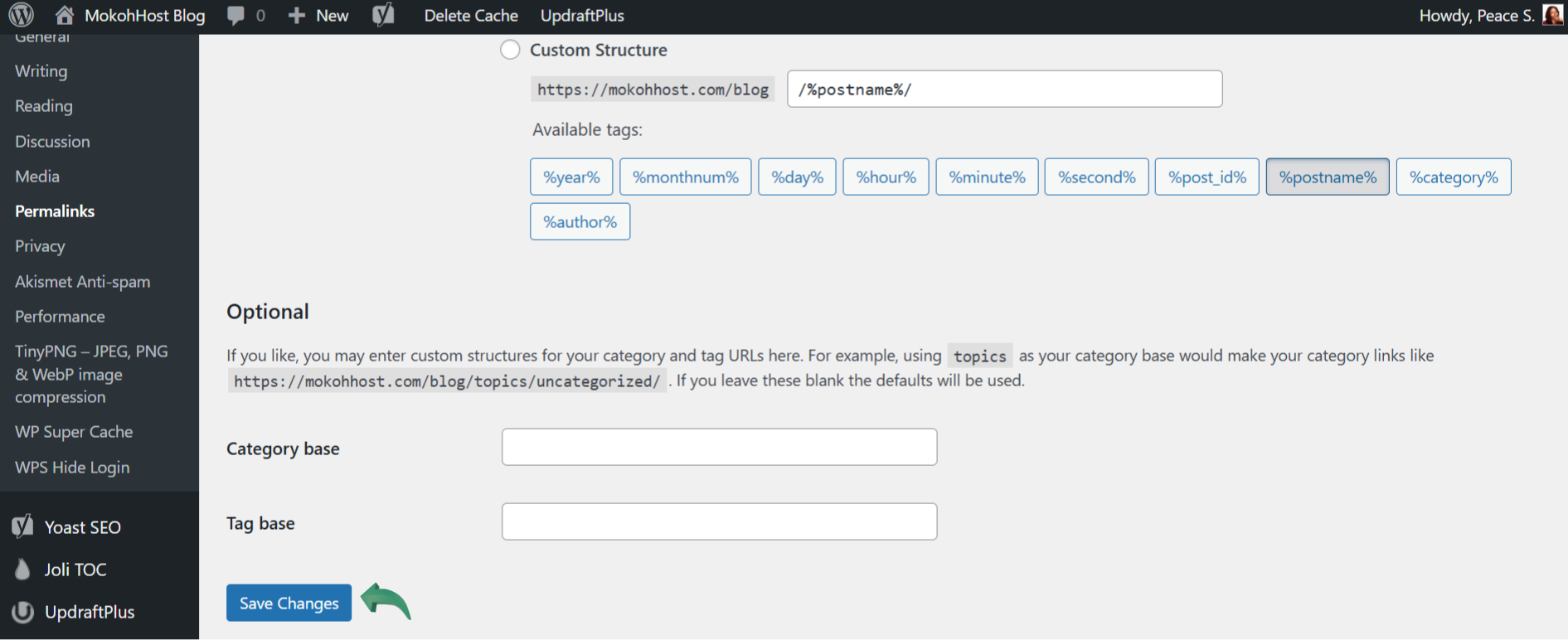Crafting SEO-friendly URLs is a quick and effective way to boost your site’s SEO. When done correctly, it can enhance your visibility in organic search results, particularly for low-traffic, long-tail keywords. URL stands for Uniform Resource Locator. A basic example is the URL https://www.bing.com/ , which directs you to Bing’s search page. It's essential to note that URLs and slugs are distinct entities. The slug refers specifically to the portion of a URL that identifies a specific page within a website. For instance, in the URL https://mokohhost.com/keyword-research/ , the slug is keyword-research.
This article shares four practical tips to help you make your WordPress URLs more SEO-friendly.
What are SEO-friendly URLs?
In search engine optimization (SEO), SEO-friendly URLs incorporate relevant keywords that clearly reflect the page's content. These URLs are both descriptive and easy to understand for users as well as search engine crawlers.
For example, a well-optimized URL for a blog post on installing WordPress might look like this:
- SEO-friendly URL:
https://mokohhost.com/blog/the-rise-of-ai-in-web-hosting-what-to-expect-in-the-next-decade/
In contrast, a poorly optimized (non-SEO-friendly) URL might look like
- Non-SEO-friendly URL:
http://www.example.com/?p=7687
Guidelines for Crafting SEO-Friendly URLs
- Keep URLs Focused
Avoid using unnecessary function words such as “a,” “of,” or “the.” In most cases, they don’t contribute any meaningful value to the URL. - Minimize Use of Verbs
If possible, remove auxiliary verbs like “are” or “have.” These usually aren’t essential for conveying the page’s topic. - Maintain Readability
While it's important to keep URLs concise, ensure they remain readable so users can easily understand what the page is about before clicking. - Use Hyphens as Separators
Separate words with hyphens (-) instead of spaces, underscores (_), or other special characters to ensure better readability and indexing. - Keep URLs Short
There’s no strict character limit, but shorter URLs are generally more focused, easier to remember, and less likely to be truncated in search results. - Consider Breadcrumbs in SERPs
If your website uses breadcrumb navigation, Google may display these in search results instead of the full URL. Keeping URLs short and structured can help maintain clarity in both cases.
What’s the Optimal Permalink Structure for WordPress SEO?
In WordPress, URLs are referred to as permalinks, short for "permanent links." You may see the terms 'permalink structure' and 'URL structure' used interchangeably; they essentially mean the same thing.
By default, WordPress now uses the post name structure for URLs, such as https://www.example.com/how-to-install-wordpress. This format is widely considered the most SEO-friendly option because it’s clean, keyword-rich, and easy to understand.
Despite this default setting, many users still ask what the best permalink structure is for search engine optimization (SEO). Some are running websites with older, less optimized URL formats and are unsure whether switching to the post name structure is worth the risk, especially if their site has been live for a while.
Others may have a large amount of content and want to confirm whether the post name format is the right fit for their needs. Although WordPress didn’t always default to this structure, it became the standard starting with version 4.2.
How to Set up an SEO-Friendly Permalink Structure
If you're setting up a new WordPress website and want to create an SEO-friendly URL structure, here's how to get started:
1. Choose an SEO-Friendly Permalink Structure
To help Google understand and rank your content for specific search terms, ensure your URL includes keywords closely related to your topic.
- First, navigate to Settings>Permalinks in your WordPress dashboard. This will open a page where you can configure your URL structure.

As you can see, WordPress offers several permalink structure options. Let’s take a closer look at each one:
- Plain (https://www.wpbeginner.com/?p=123) – This was once the default format, but it’s not SEO-friendly as it doesn’t include any keywords or descriptive text.
- Day and name (https://www.wpbeginner.com/2016/01/22/sample-post/) – This format includes the post name, which helps with SEO. However, the date makes the URL long and can make your content appear outdated over time.
- Month and name (https://www.wpbeginner.com/2016/01/sample-post/) – Similar to the day and name format, this version still includes a date, which may not be ideal for evergreen content. That said, it’s suitable for news or time-sensitive articles where the publication date matters.
- Numeric (https://www.wpbeginner.com/archives/123) – This structure includes the archive and post ID but lacks descriptive keywords, making it a poor choice for SEO.
- Post name (https://www.wpbeginner.com/sample-post/) – This is the most SEO-friendly option. It keeps URLs short and meaningful, making it ideal for business websites and evergreen content.
- Custom Structure—This allows you to create a personalized URL format using tags. It’s a good option for larger websites or publications that require a more customized structure beyond just the post title.
- Click on Permalinks in your WordPress dashboard. This will open a page where you can configure your URL structure.

3. Once you have chosen a permalink structure, scroll down and click ‘Save Changes.’

WordPress will then automatically update your site’s file, and your site will immediately start using the new URL structure.
2. Rewrite Your URLs to Make Them SEO-Friendly
Making your URLs clean, clear, and keyword-focused can improve both user experience and search engine visibility. Follow these do’s and don’ts to optimize your WordPress URLs effectively:
Do’s
- Keep URLs focused
Use relevant, targeted keywords that reflect the content of the page. - Remove unnecessary words
Eliminate “stop words” like a, the, of unless they’re essential. This keeps URLs concise and focused. - Keep URLs short
Shorter URLs are easier to read, share, and remember. Use only the most important keywords. - Be consistent with formatting
Always use hyphens (-) to separate words. This is WordPress’s default and the most SEO-friendly practice.
Don’ts
- Don’t use long, cluttered phrases
Avoid overly descriptive or conversational URLs like
"example.com/the-burning-man-sunrise-party-we-went-to-was-awesome" - Don’t rely on stop words
They don’t directly harm SEO, but they add length and reduce clarity. - Don’t mix separators
Stick to hyphens—don’t switch between dashes and underscores.
3. Create a Custom URL Structure in WordPress
At WPBeginner, we use a custom permalink structure that includes both the category name and the post name in the URL. This setup works well for us because we manage a large website with thousands of articles. You'll notice that many large blogs, online publications, and e-commerce stores employ similar structures to organize content and enhance user navigation.
To create a custom URL structure in WordPress, you’ll need to enter special tags into the Custom Structure field. For example, we use:
/%category%/%postname%/Each tag is wrapped in percent signs, and slashes (/) separate the elements. This format is effective because it keeps URLs descriptive while also clearly indicating the content’s category, without being overly long.
Of course, you can experiment with other combinations to suit your site’s needs. Here are some of the tags you can use to build your own custom permalink structure:
- %year% – The year the post was published (e.g., 2025)
- %monthnum% – The month number (e.g., 06)
- %day% – The day of the month (e.g., 05)
- %hour% – The hour the post was published (e.g., 14 for 2 PM)
- %minute% – The minute the post was published (e.g., 30)
- %second% – The second the post was published (e.g., 45)
- %postname% – A URL-friendly version of the post title (e.g., how-to-start-a-blog)
- %post_id% – The unique ID of the post
- %category% – A sanitized version of the category name (e.g., wordpress-tutorials). Subcategories will appear as subdirectories.
- %author% – A URL-friendly version of the author’s name
Once you've customized your permalink structure, be sure to click ‘Save Changes’ to apply the new settings.
Conclusion
Optimizing your WordPress URLs is a simple yet powerful step toward improving your site's SEO. By keeping your URLs short, focused, and keyword-rich, you make it easier for both users and search engines to understand and navigate your content. Avoid unnecessary words, maintain consistent formatting, and choose a permalink structure that aligns with your website’s purpose. Whether you're running a blog, an online store, or a large publication, SEO-friendly URLs can enhance your visibility and contribute to long-term search rankings. Start implementing these best practices today to set your content up for success.

